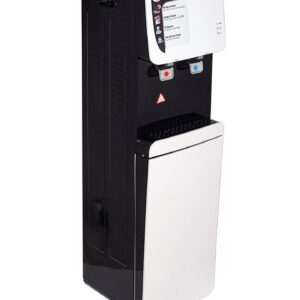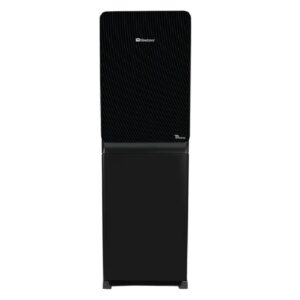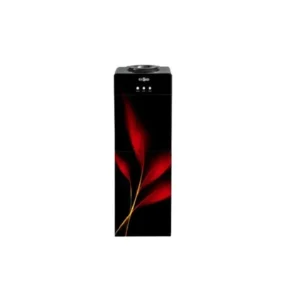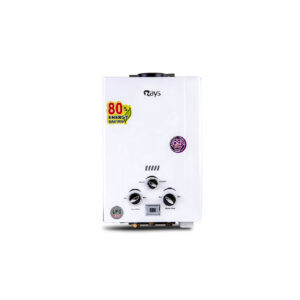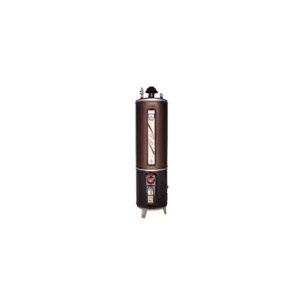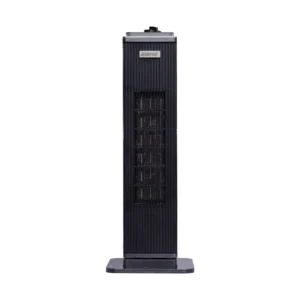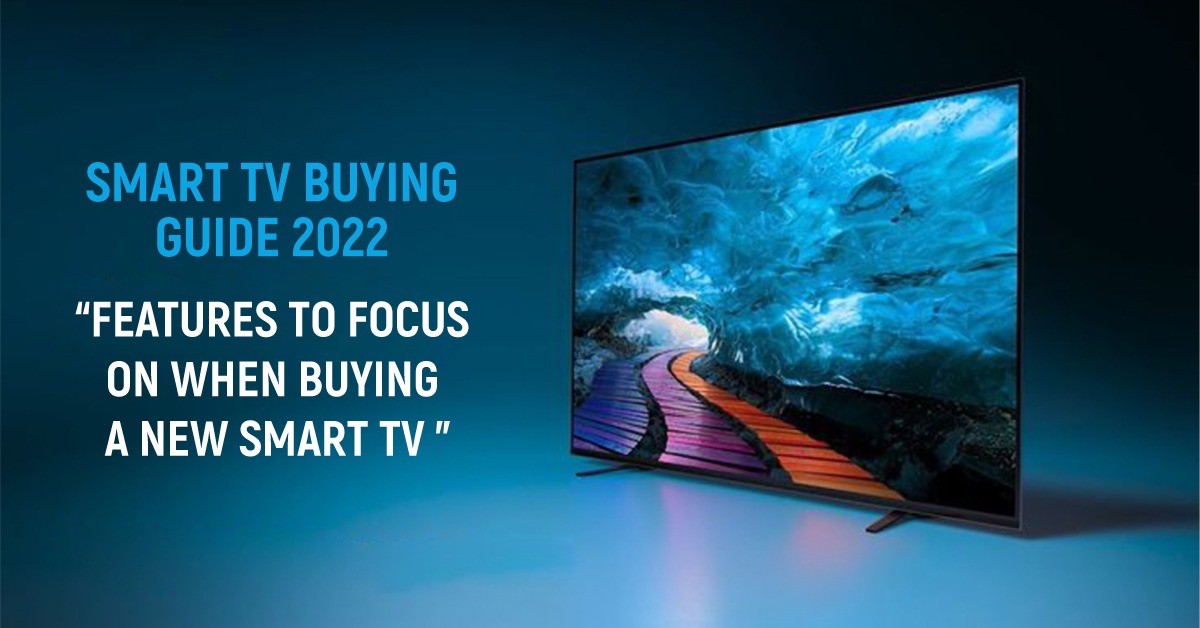Selecting a tv used to be a very easy task a few years ago. However, it has been a difficult task since the advent of new audio and visual technologies and smart applications. You should look at the various features of the smart TV before choosing the one that fits your budget and comes with the features you want. With the 2020 holiday shopping season approaching, we wanted to help you choose the right smart TV.
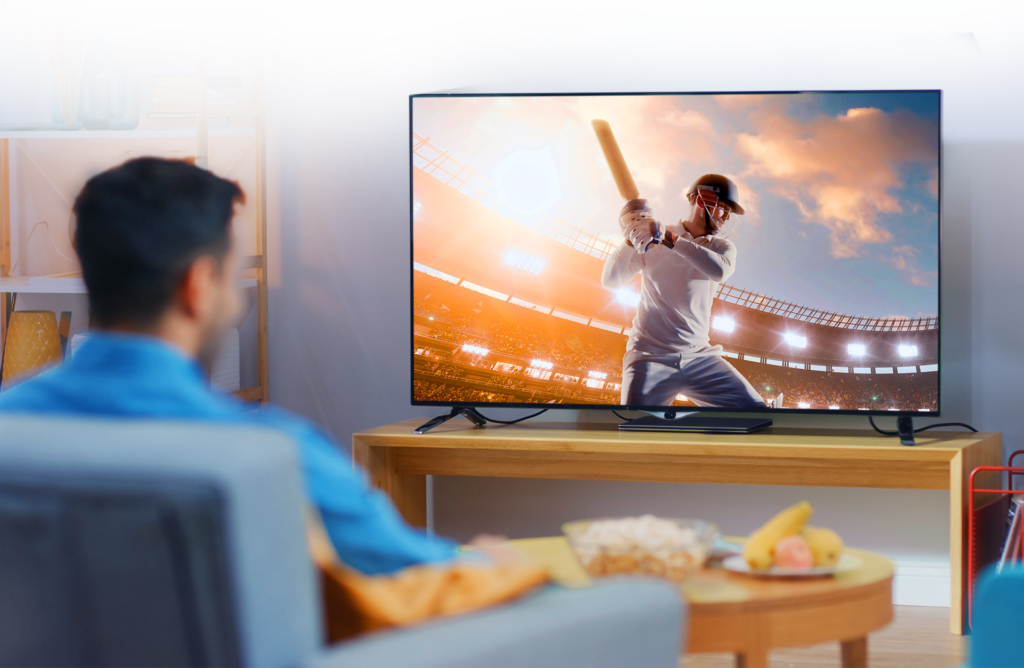
Which Screen Size & Resolution is Suitable for Your Room?
From as little as 18 inches to as wide as 85 inches, TVs come in a variety of sizes. Therefore, to limit your choice, you need to decide what should be the screen size of the TV you are going to buy. And to find out, first measure the size of your room and the distance between your couch (wherever you usually sit while watching TV) and where you intend to place the TV. The chart below gives you an idea.
| Screen size | Min sitting distance | Max sitting distance |
| 18” | 3’ | 4’ |
| 24” | 4’ | 5’ |
| 32” | 5’ | 6’ |
| 40” | 5.25’ | 8’ |
| 43” | 6.5’ | 9’ |
| 50” | 7’ | 11’ |
| 55” | 8’ | 11.5’ |
| 65” | 9’ | 13.5’ |
| 75” | 9.5’ | 14’ |
| 85” | 10 | 15’ |
TV Screen Size from Seating Distance
Since the chart above speaks of both the minimum distance and the maximum appropriate distance from the TV, you should try to get a TV with a larger screen size if your budget allows it. The big screen always gives you a very focused feeling and you don’t have to close your eyes while trying to read a text like a news tag, sports articles, and names of people in the news.
TV Screen Sized Measured Diagonally
Coming to the TV’s screen resolution, you should always choose a TV with a Full HD (also known as 1080p or 1,920 x 1,080 pixels) or higher resolution. A TV’s screen size is always measured diagonally. A Full HD panel will look sharp enough for a TV with a screen size as big as 55 inches (diagonally). However, if you are buying a TV that’s bigger than 55 inches, choose a TV with a 4K resolution (also known as UHD or 3,840 x 2,160 pixels). For TVs larger than 85 inches, 8K resolution is recommended.
TV Screen Technologies Advantages Disadvantages
Twisted Nematic (TN) LCD
As explained in the table above, TN LCD panels (twisted nematic) are the cheapest. Most TVs do not use this screen technology, but some brands may use this technology in their more affordable and cheaper TV models. Although TN screens have high response times, they have very small viewing angles, and only people sitting right in front of the TV can see the video. People sitting on the sides of the room will not be able to see exactly what is on display. Moreover, the degree of variability of such screens is very low. It is best to avoid TVs that use TN LCD screen panels.
Vertical Alignment (VA) LCD
Many TV brands use VA LCD panels (vertical alignment) on their affordable and mid-range TVs. The LG is unique, and it uses IPS LCD panels for almost all of its entry-level and mid-range TVs. VA LCD panels are affordable, with good brightness, bright colors, and good pixel response times. However, their viewing angles are slightly smaller (wider than TN LCD but smaller than IPS LCD and OLED). TVs with VA LCDs should be considered decent, but IPS LCD TVs are a little better. If you can choose a TV with an IPS LCD panel at a slightly higher price, choose one.
In-Plane Switching (IPS) LCD
IPS (in-plane switching) LCD screens have wider view angles compared to TN and VA LCD panels. They have good brightness, colors, and a comparative scale. However, compared to VA LCD panels, IPS LCD panels have fewer black mud and pixel response times. If you can afford it, choose TVs with IPS LCD screens.
(Quantum Dot) QLED
QLED panels are a type of VA or IPS LCD panels with an additional layer of adhesive QLED or film over standard pixels. This special adhesive or layer allows the screen panels to produce a deep white and deep black. It also increases the screen volume. Both LG and Samsung make screen panels with quantum dot coating. LG calls its IPS LCD screens with quantum dot coating ‘Nano cell’, while Samsung calls its VA screen panels with quantum dot coating QLED. TVs with such screen panels usually have a higher value than TVs using standard VA LCD screen panels and IPS LCD.
OLED
OLED screen panels (organic light-emitting diode) are the most expensive and offer the best screen quality among any type of screen panel (at least among those currently sold worldwide). OLED TVs offer deep blackness, a wide range of contrast, excellent colors, and wide viewing angles. However, they cannot achieve light levels on some VA LCD TVs and QLED TVs. They also suffer from a problem called pixel burn-in, which occurs when the same image, frame, or scene is displayed on the screen for an extended period (an hour or more). Although image storage goes off when you switch channels or play videos for a few hours, sometimes the damage can be permanent. So, when you buy an OLED TV, make sure you do not leave the TV open with the same image, still image, or same channel for long periods. Modern OLED TVs come with mobile technology for stationary content such as a channel logo, scoreboard, or mini menu to save on burning pixels.
TV Speakers for Audio output
Most TVs come with stereo speakers. Unless you have a dedicated speaker system or sound bar, try getting a TV with 20W or higher standard room speakers. If you have one of these luxury living rooms, you should consider using a home theater setup, a studio monitor, or a soundbar. Other leading TVs from Samsung, Sony, and OnePlus come with 4.1 built-in speakers with dedicated tweeters and woofers.
Make sure the TV you choose to purchase has DTS recording support, Dolby Digital, and 5.1 channel audio. High-quality TVs should be able to record audio for DTS: X and Dolby Atmos.
Connectivity & Ports
Smart TVs should also have an adequate number of ports and wireless connectivity features. Any modern smart TV should have the following ports and wireless connectivity protocols:
Must have Smart TV Ports
You should watch TV with at least two HDMI ports. If your TV has Full HD resolution, it should have HDMI 1.2 holes. If it is a 4K TV, it should have HDMI 2.0 ports, and if it is an s 8K TV, it should have HDMI 2.1 ports. To be on the safe side and maintain interaction with other older cameras you may have, your TV should have at least one input port for the video.
In terms of sound, your new TV should have at least one or more coaxial digital audio drills. You must also have at least one pair of RCA ports (left and right) or a 3.5mm headphone jack so you can connect to headphones or external speakers without the need for a dedicated DAC.
Since smart TVs require an internet connection, your new smart TV should have an ethernet port and Wi-Fi. If you have a Full HD or 4K TV, you should choose a TV with dual-band Wi-Fi b / g / n (also known as Wi-Fi 4) or dual-band Wi-Fi b / g / n / a (also known as Wi-Fi 5). 8K TV is required to have Wi-Fi 6 to stream 8K video files from the Internet or local network storage.
Having Bluetooth is an advantage as it allows you to connect your wireless headphones or earphones with the TV if you do not want to be interrupted.
Software for Smart Tv 2022
Smart TVs require a smart operating system to run applications, have smart features, and maintain compatibility with a variety of services. There are three main applications for active smart TVs: Android TV (developed by Google), Tizen (developed by Samsung), and WebOS (developed by LG). There are a few TVs that use the Amazon Fire TV app, which is based on Android, but it is difficult to support such TVs in the Indian market.
Android is the richest app on all the smart TV platforms available. However, it is also in the middle moving slowly. While not much of a difference, Android TV-based TVs feel slow when they turn on the TV, open apps, and switch between apps. Samsung’s Tizen and LG’s webOS feel a bit slow compared.
Smart TV requires not only a smart app but also apps for streaming (or playing) music and videos. Watch TVs that come pre-installed (or compatible) with these apps:
Netflix
Prime Video
Disney+ Hotstar
YouTube
Apple TV
Sony LIV
Voot
ErosNow
Discovery+
ZEE5
Spotify
Gaana
Plex
VLC
Extra Features
These are the additional features that you should look out for in your brand-new smart TV:
- Smart Home Control
- AI-Powered Voice Assistant
- Screen Mirroring
Here are some additional features to look out for in your brand-new smart TV:
High-Rate Update and Flexible Sync (Nvidia G-Sync or AMD FreeSync)
If you are a player, you should choose a TV with a refresh rate of more than 60Hz and some other flexible synchronization features. It is essential if you are playing games on your PC connected to your TV or have a gaming console released in 2020, such as the PlayStation 5, Xbox Series S, or Xbox Series X. Advanced TVs from LG, Samsung, and Sony have a screen refresh rate of up to 120Hz. Some models are compatible with Nvidia’s G-Sync or AMD’s FreeSynch adaptive rate refresh rate technology, which ensures no screen cracking by comparing the screen refresh rate with the game’s stand-alone rating.
Smart Home Control
Newer smart TVs can control smart home products, but they are picky and choosy. For example:
TVs using Android TV can only control smart home products that are compatible with Google (or Google Home). On the other hand, only Samsung smartphones running Tizen and Bixby can control smart home devices based on the SmartThings platform.
LG TVs using webOS can control smart devices compatible with LG ThinQ.
However, some Android TVs (such as the OnePlus TV and Xiaomi Mi TVs) are also compatible with Amazon’s Alexa, so they can control the Alexa products that are compatible with Alexa.
Some Samsung TVs and LG TVs are also compatible with both Alexa and Google Assistant, so they can control smart devices compatible with Alexa and Google Assistant.
AI-Powered Voice Assistant
AI-enabled digital voice assistants can do things like change channels, volume control, change video input, get answers to your questions, let you know about sports scores and more. TVs based on Android TV come with Google Assistant, advanced in terms of quality and voice recognition.
Samsung and LG TVs come with Bixby and LG ThinQ, respectively. However, some TVs from these companies come with Alexa compatibility with Google Assistant.
Screen Mirroring
If you want to mirror content on the screen of your computer, smartphone, or tablet, you should make sure that the TV you choose has a single-screen display technology: Miracast, Google Cast, AirPlay 2.
Miracast is the most widely used screen display technology, but it has its problems related to response time and quality. Google Cast is available on Android TV, and it works very reliably. However, Apple products (Macs, iPhones, and iPads) do not support Google Cast. Instead, they support AirPlay or AirPlay 2, and the technology is available on high-end smart TVs from LG, Samsung, and Sony released in 2022.



